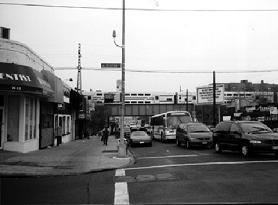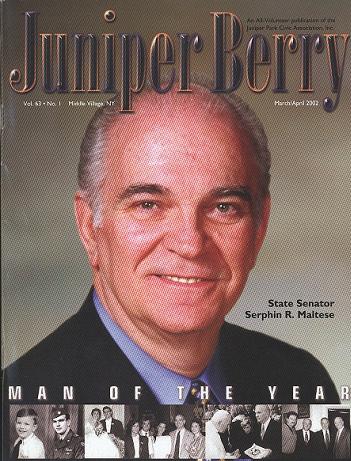Your train consisting of tuscan red with gold trip, MP-54, (Ping Pong) coaches, diverges from the main line at White Pot Junction, leaving apartment complexes behind. Soon you are completely surrounded by water – waves lick the timber trestle below – fisherman in rowboats are almost in reach as you enjoy the salty breeze wafting in the open windows of the coach.
In the years before SUV's, the Long Island Rail Road's Glendale Cutoff to the timber trestle over Jamaica Bay was the route my parents and I along with many Middle Village, Glendale, Rego Park and other neighbors took for summertime fun in the Rockaways.
The Glendale Cutoff idea came about because of the electrification of the Rockaway branches in 1905.Until the opening of Pennsylvania Station in Manhattan, Long Island Rail Road passenger trains terminated in Long Island
City using connecting ferries to reach Manhattan.
At that time passenger trains almost exclusively used the Montauk Branch through Fresh Pond to reach Long Island City while freight trains were routed on the main line through Forest Hills. This situation flipflopped after the Pennsylvania Station opening, presenting a problem for Rockaway Beach Branch trains that would thereafter use the Manhattan terminal. At the time the Rockaway Beach branch diverged off the Montauk Branch at Glendale Junction, (Southeast of Metropolitan Avenue and Woodhaven Boulevard), turned south and followed the original New York,Woodhaven & Rockaway Line (1881), through Woodhaven and over the Jamaica Bay trestle.
The problem was solved by building the two-mile, double track Glendale cutoff between the mainline at White Pot, (near 64th Road and Alderton Street), to Glendale Junction on the Montauk Branch, paralleling the power transmission line erected earlier to connect to the Woodhaven Junction sub–station. The cutoff tracks connected directly to the existing Rockaway Beach Branch along with a northeast connection to the Montauk Branch.
Construction work on the cutoff started in August 1908 and the line was completed March 1, 1909. Electrified service on the cutoff opened between Long Island City and Far Rockaway June 16, 1910, with full service to and from Penn Station starting September 8, 1910.
A flying junction was effected on the main line at White Pot with a good portion of the rest of the cutoff on a fill. Just south of the junction, coming off the westbound track of the branch at Fleet Street was the only freight siding of the cutoff. It was removed in 1929. One station, Parkside, (Metropolitan Avenue and Alderton Street) was built on the line. The Glendale cutoff was one of the last pieces of new Long Island Rail Road trackage to be built during Pennsylvania Railroad control and it became a portion of the Rockaway Beach branch.
Despite heavy summer beach traffic, the Long Island had long wished to sell its Rockaway branch to the city.
Maintenance of the 4.8 mile Jamaica Bay timber trestle ate away the profits. A rash of timber fires occurred on the Jamaica Bay trestle between 1942 and 1950. On May 8, 1950, a fire knocked out a good-sized portion of the trestle. The Long Island, already bankrupt, chose not to rebuild the trestle. Thus the LIRR got its wish and thereafter the city would take over Queens Rockaway service.
LIRR commuter service from Penn Station continued to Hamilton Beach while Triboro Coach obtained a franchise at this time to run (Q53) express bus service, replacing train service, from Woodside and Rego Park to Rockaway Park – 116th Street. Service to Hamilton Beach was eliminated east of Ozone Park on October 2, 1955, to help make way for IND “A” Rockaway subway service over a new concrete Jamaica Bay trestle, which began service in 1956. Vandalism at some branch stations caused the Long Island in 1958 to raze the wood stations and platforms at the Rego Park, Parkside and Brooklyn Manor stations, substituting single, low level platforms with a shelter. By this time operation was down to one train a day each way. The loyal commuters rode to the end which was June 8, 1962, when Long Island operation on the Glendale cutoff ended forever.
Today, Green Line Manhattan express bus service has replaced rail service from Ozone Park through the Glendale cutoff to Rego Park. This abandoned, weed covered, right-of-way is now commonly referred to as the “Forgotten Spur.”
If a Midtown – Kennedy Airport, one seat rail ride plan is implemented, then the “Forgotten Spur” will no longer be forgotten.




